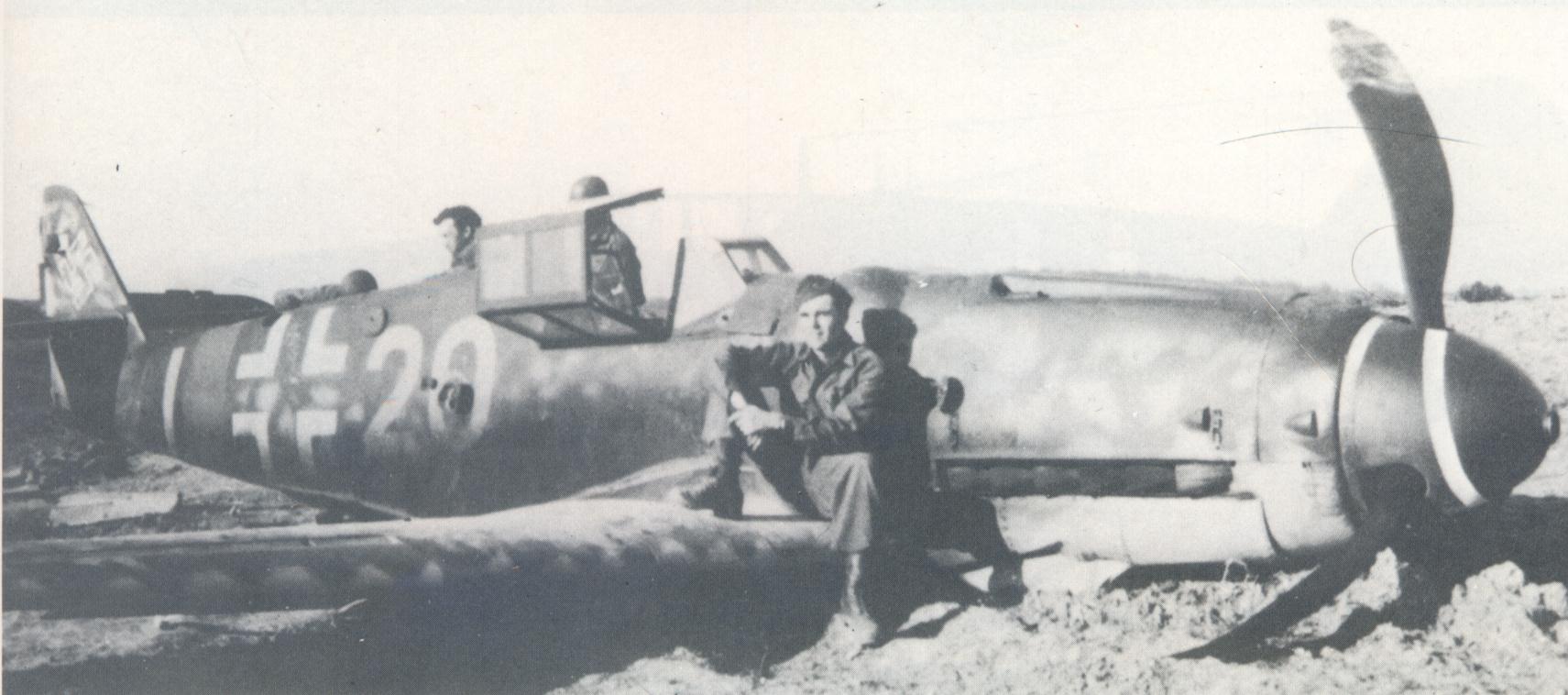Some weeks back there was a lively discussion about a Bf 109G, marked gelb 20 + I, that appears on page 13 of Monogram Publication’s CLOSE-UP 7 Gustav, Messerschmitt 109G Part 2. The discussion centered around whether the aircraft was:
1. A G-6 or a G-14
2. If it was from III./JG 7 as listed in CU 7 and whether it had the markings shown in the color profile on page 14.
3. Where the photo might have been taken, in France or Northern Italy.
There was some disagreement over these issues. I think we may be able to put most of these issues to rest. Rabe Anton, a frequent visitor to this forum, has found a file in the USAF records at Maxwell AFB that, we believe, answers the questions and leaves only a stone or two unturned.
The file is a report of a prisoner interrogation. It originated with the APWIU (Air Prisoner of War Intelligence Unit) of the 1st Tactical Air Force, numbered 25/1945. The report is dated 22.March 1945. Paraphrasing the 6 page report, the following points emerge:
· A Bf 109G-6 or 14 crash-landed at 1300 hours near Luneville, France.
· The German pilot was defecting. He was not named but was from Berlin.
· The aircraft was listed in the report as a G-4 (sic, typo) or G-6. The report is not certain whether the aircraft was a G-6 or 14 (of which more, anon).
· The aircraft was marked yellow 20 + I and the spinner had a single white spiral.
· No mention is made of any other markings other than the oil fill point triangle on the port side of the nose.
· The pilot’s unit was Ergänzungskampfgruppe (J), a “Verbandsführerschule des General der Kampfflieger” (sic). The school was for the conversion of bomber pilots from KGs 6, 30, 54 and other units unknown to the prisoner. There were 4 Staffeln in the unit. The POW was in the third Staffel. The unit was based at Ansbach airfield.
· The POW had been planning to defect for some time. He was ordered to do solo training, doing practice circuits and some acrobatics. He selected an aircraft with full fuel tanks and after a few circuits began his defection flight. After several navigation changes, his engine began to overheat, he smelled burning oil and belly-landed the aircraft.
Now while this report does not definitively establish a link between that photo and the defected aircraft, let me pose the following:
(1) In the third week of March 1945 or later, how many gelb. 20 + I Bf 109s would have come down in the West?
(2) Of the above, how many would have been (apparently) G-6s with a tall tail?
(3) Of the above, how many would have had spiral spinners?
(4) Of the above, how many would have come down on their bellies in a way so closely similar to the report?
I believe that circumstantial evidence forces one to conclude these are one and the same and the aircraft is not a “guard” aircraft from III./JG 7. Now, some unanswered questions:
2. What about the III Gruppe bar in a unit with a designed 1, 2, 3, and 4 Staffeln? I have no idea. One of those mysteries. Perhaps it is not a yellow bar, but a white marking that sometimes appeared on 109s marking the fuselage trestle point. Note how the “bar’s” photograph gray tone matches the white cross better than the yellow 20 and, it is much longer than a normal Gruppe bar, actually disappearing under the fuselage into shadows.
3. Is it a G-6 or G-14? We do not know. The W.Nr is not listed. The pilot was not sure and the POW interrogator did not know which it was. At this point in the war, they probably did not care and an A.T.I report document, if one exists, has not been located. One small piece of evidence perhaps to make it a G-6: the gun troughs appear to be the early type which, to my knowledge was not on the G-14. An earlier assertion in the discussion that the open filler cap in the lower position the right side of the fuselage indicated it was MW 50 for a G-14 is not correct. The G-6/R2 was a G-6 that had been converted to MW50 from GM-1 and the filler point was as in the photo.
Lastly, there are absolutely no loss reports for Bf 109 a/c from JG 7 at any time in December 1944 through April 1945. Does it not make sense that if the unit has used 109s either as guard a/c or even conversion training, there would have been losses? It beggars the imagination to think there would not have been any losses from 10% to 100%. Second, the Lw QM inventory reports list no 109s for the period September through the end. There is an entry in October, but none are listed as received, held or transferred. This means there weren’t any.
Overall, however, I think a very justifiable conclusion is that this was not a “guard” aircraft from JG 7 but an aircraft from a training unit.

